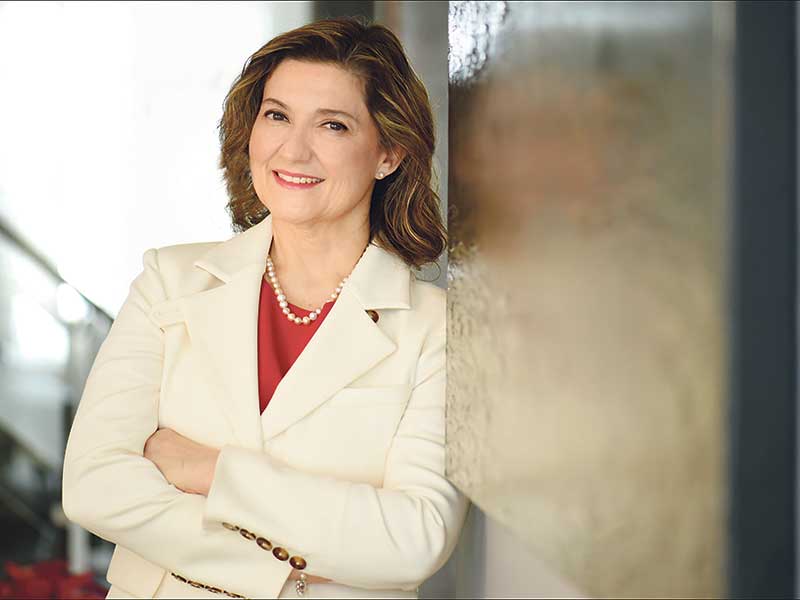
This article appears in the March 2023 issue of Investment Executive. Subscribe to the print edition, read the digital edition or read the articles online.
After more than 20 years in senior compliance and finance roles with large, public companies, former Ontario Securities Commission (OSC) compliance manager Toni Ferrari is returning to an investor-protection and oversight role amid significant change in the financial services regulatory landscape.
Ferrari — until recently senior vice-president of internal audit with Bank of Nova Scotia — was appointed inaugural president and CEO of the re-formed Canadian Investor Protection Fund (CIPF) in January. The new entity was created by merging the old CIPF, which served clients of Investment Industry Regulatory Organization of Canada (IIROC) dealers, with the Mutual Fund Dealers Association of Canada Investor Protection Corp. (MFDA IPC).
The new CIPF’s board is made up of members from the two predecessors’ boards, Ferrari said, and its “rebranding is pretty much done.”
Rozanne Reszel retired as president and CEO of the old CIPF on Dec. 31. Odarka Decyk was president of the MFDA IPC and is now vice-president with the new CIPF.
The new CIPF provides coverage to investors who lose securities, cash or other property held by member firms that become insolvent. The original CIPF was formed in 1969, while the MFDA IPC began covering clients’ accounts in 2005.
Although coverage was similar, the MFDA and IIROC funds differed in how they operated and assessed member firms’ insolvency risk, Ferrari said. The former CIPF also was “more independent” from IIROC than the IPC was from the MFDA.
The new CIPF is looking to take a more “risk-based approach” on registrants so their member firm assessments — the amount firms pay into the coverage funds — will be “proportionate” to insolvency risk, Ferrari said. The CIPF will look at factors that influence the financial health of a member firm, such as its level of capitalization, financial controls and where it keeps custody of assets.
When asked about the risk to firms in the current investment landscape, Ferrari noted that there weren’t any insolvencies from 2002 to 2011 despite the 2008 financial crisis. “So far, we’re seeing that firms are being resilient and are not noting that there’s heightened risk,” she said.
But the CIPF remains vigilant and runs simulations of firms going insolvent and of multiple insolvencies happening at the same time, Ferrari said.
“We assume [during a simulation] that a firm is going under, and we’ll have all that data around where they keep their assets, where they keep their books or records, what is the potential net loss,” she said.
After First Leaside Securities Inc. became insolvent in 2012, the old CIPF streamlined its claims process, Ferrari said. And the insolvency of MF Global Holdings Ltd. in 2011 made clear the importance of having memoranda of understanding with other international funds. “You can have an insolvency of a company that has a foreign affiliate, and how you co-ordinate with them to get books and records becomes very important,” she said.
Ferrari, who holds the chartered professional accountant designation, was born and raised in Toronto. She earned a bachelor of commerce and finance at the University of Toronto and went on to work for firms such as KPMG Canada and Burns Fry Ltd. (now BMO Nesbitt Burns Inc.). She joined the OSC in 1994, leading the compliance unit until 2001, a period she described as “a very pivotal time in the securities regulatory landscape.”
“I was working on the project to create the MFDA and I actually used to oversee the CIPF and worked with the Canadian Securities Administrators across Canada because we all worked collectively together,” she said.
Ferrari left the OSC in 2001 to join RBC Wealth Management as head of risk and compliance, and later held similar senior roles with Barrick Gold Corp. and Toronto-Dominion Bank.
“When I was approached to consider the [new CIPF CEO] role, it just seemed appropriate to me to come back [to an oversight role] at another pivotal time,” Ferrari said.
“Listening to your stakeholders, understanding their perspectives, and then … being transparent about how you’re progressing and making changes — that’s what helped us with the MFDA because there was so much stakeholder engagement and communication on what the plans were,” she said.
The new self-regulatory organization could expand into other registration categories, such as exempt-market dealers, scholarship dealers and portfolio managers. Will the new CIPF cover those categories as well?
“Right now, [CIPF covers] and will always cover the members of [the former] MFDA and IIROC,” Ferrari said. “So, to the extent that products are sold by players in the industry that are not members and do not pay into our fund, we would not cover them.”
With some exclusions, the CIPF covers up to $1 million for all of a client’s general accounts combined, plus $1 million for all of their registered retirement accounts combined, plus $1 million for all RESPs combined, although crypto-related property controlled by the new SRO’s members is excluded. The CIPF doesn’t cover losses because of market conditions.
“If [a client lodges] claims of unsuitable investments because either [they] did not understand [their] risks or there was misrepresentation, and [the assets] lost value, we’re not going to cover that,” Ferrari said. “But we will make sure [the client gets] the market value of [their] assets at the time of insolvency.”
The new CIPF will continue the work of its predecessor in using podcasts and social media to raise awareness among financial advisors and investors, Ferrari said.